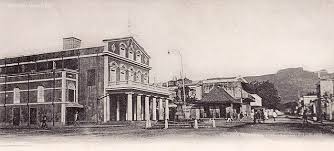Port Louis, the capital city of Mauritius, is not just a bustling metropolis but a treasure trove of history that reflects the island’s multicultural heritage and colonial past. Founded in the 18th century, the city has evolved from a strategic port for European powers to a vibrant hub of commerce, culture, and governance.
Early Origins: The Settlers and Pirates
The history of Port Louis dates back to the late 17th century when the Dutch were the first Europeans to visit the island. The earliest known data about settlement in this city dates back to 1606 when Dutch settlers started to use this area as a harbour which they call Harbour of Tortoises, after their initial 1598 settlement at Port de Warwick in Ferney, Vieux Grand Port. However, it was the French who laid the foundation of what would become Port Louis. In 1715, the French established a settlement in the area, attracted by Mauritius’ strategic location along the trade routes to India and the East Indies. The site was initially called “Port Louis” in honor of King Louis XV of France.
Before the French settlement, the island was largely uninhabited, except for occasional visits by Arab traders and pirates who sought refuge in its sheltered bays. The natural harbor’s deep waters and protection from strong winds made it an ideal location for ships. As the French established their presence, the first structures were built, including a port and warehouses to accommodate trade.
These early inhabitants are what people claim led to the extinction of the famous Dodo bird, native of Mauritius. A flightless bird that couldn’t fly out of the island and lost the battle of survival to human encroachment to their lands.
The Colonial Era: French and British Influence
During the late 18th century, Port Louis flourished as a crucial naval base and commercial center for the French East India Company. The city expanded rapidly, with the construction of buildings that still bear witness to its colonial past. Notably, the Citadel (La Citadelle) was built between 1835 and 1840 to protect the city from potential invasions.
In 1810, British forces captured the island during the Napoleonic Wars, and Mauritius became a British colony. The British retained much of the existing infrastructure and continued to enhance the port facilities. Under British rule, Port Louis became a melting pot of cultures, with an influx of Indians, Africans, Chinese, and Europeans contributing to the diverse population.
Economic Development and Social Change
Throughout the 19th century, Port Louis continued to grow as a center of trade, agriculture, and governance. The sugar industry became the backbone of the Mauritian economy, and the port played a pivotal role in exporting sugar and other agricultural products. The construction of the Mauritius Railway in the 1860s further facilitated trade by connecting the interior of the island to the port.
As the city developed, it also faced numerous social challenges. The introduction of indentured laborers from India in the 19th century created a multicultural society but also led to tensions and conflicts. Over the years, various communities established their own cultural identities, enriching the heritage of Port Louis.
Independence and Modern Era
Mauritius gained independence from British rule on March 12, 1968, marking a significant turning point in the history of Port Louis. The city became the political and economic capital of the newly sovereign nation. The government invested in urban development, infrastructure, and tourism, transforming Port Louis into a modern city while preserving its historical charm.
Today, Port Louis is a bustling urban center with a vibrant mix of cultures, traditions, and lifestyles. It is home to the famous Central Market, where local goods, spices, and crafts are sold, and the Aapravasi Ghat, a UNESCO World Heritage Site that commemorates the arrival of indentured laborers.
Cultural Heritage and Attractions
Port Louis is rich in cultural heritage, with architecture and landmarks that reflect its colonial past. The city boasts a blend of French, British, and Creole influences, evident in its cuisine, festivals, and daily life. Significant landmarks include:
- The Caudan Waterfront: A popular destination for shopping, dining, and entertainment, offering a stunning view of the harbor.
- The Blue Penny Museum: Dedicated to Mauritius’ postal history and showcasing rare stamps and artifacts.
- The Government House: An impressive colonial-era building that serves as the official residence of the Prime Minister.
Population of Port Louis
Port Louis is the capital of Mauritius and largest city without population of around 155,200 people as of 2024 census data. Population of Mauritius has been declining steadily due to lower birth rates, inflation and migration. While Mauritius is a great destination for holidays and retirement, youth have been migrating to other countries especially in Europe for better study and job opportunities.
